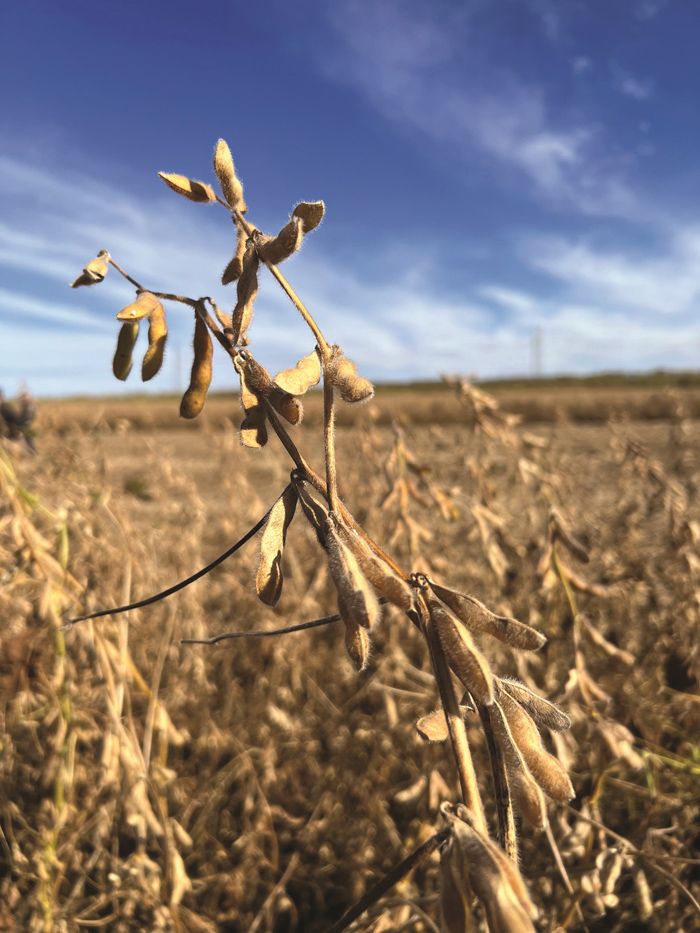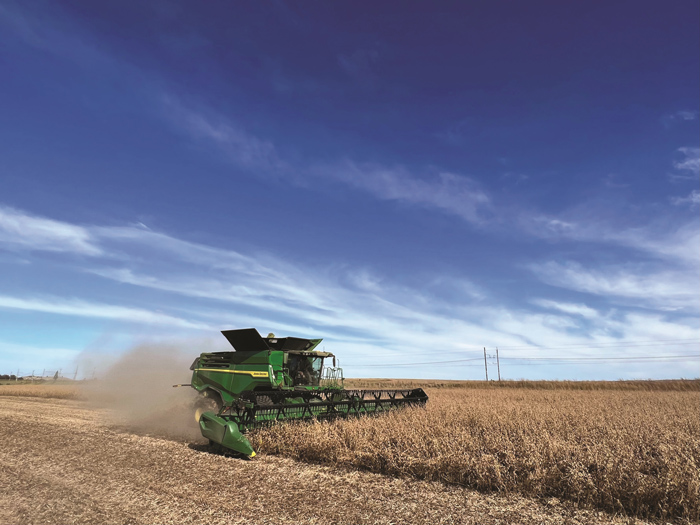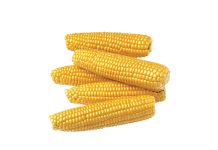
SA Graan/Grain contributor
Continuous development of new varieties with improved quality and yield characteristics is indispensable to the sustained production of crops. Likewise, continuous investment in breeding constitutes an important requirement for an industry to remain viable. Producers need to have access to new varieties and technologies to remain successful and profitable.
The expansion of South Africa’s soybean industry can be largely attributed to the breeding and technology levy collected over the past years and the distribution of funds back to the seed companies’ breeding and technology programmes. This enabled the industry to boast with a success story that has led to more sustainable cultivation practices, increased processing capacity, and the substitution of imported soybean oil cake and oil with locally produced products.
According to John Odendaal, Pannar business manager, the high percentage of producer retention of grain for seed of open-pollinated crops, as well as the historically low margins associated with them, necessitated the industry to seek alternate models that would generate sufficient income to enable sustainable breeding efforts in these key crops and to ensure ongoing genetic improvement.
The South African Cultivar and Technology Agency (SACTA) addresses the need to advance breeding of self-pollinated grain and oilseeds by collecting a levy at the first point of sale or delivery and by paying breeding and technology levies to seed companies and plant breeder rights’ holders based on estimated market shares.
This levy is enabling access to new sources of germplasm, bio-technology, better equipment, tools, and infrastructure to the various breeding programmes at seed companies and other institutions with the end goal of affording producers the opportunity to participate in the value chain with improved varieties.
‘The SACTA breeding and technology levy should be seen as a method to drive innovation in the value chain and as an investment into the sustainability of the grain market in South Africa. It is aimed at driving producer profits and crop productivity. The system is benefitting the entire value chain – the producer gets new germplasm and technology, the seed suppliers are receiving an income to reinvest in breeding and the downstream value chain is benefitting with improved grain and more local material. With new varieties and technology, local producers are now better equipped to compete with producers in other world production areas,’ said Andrew Bennett, CEO of SACTA.
Keeping the soybean industry viable
An investigation into the future viability of the current soybean breeding and technology levy system, conducted by the Bureau for Food and Agriculture Policy (BFAP) in 2023, indicated that the levy system was a landmark breakthrough in keeping the soybean industry viable. It ensured that producers gain access to the latest varieties and technologies.
The envisaged benefits of the levy may be found in the expansion of the soybean industry over the past three years. During the 2021/2022 production season, the area planted to soybeans was 925 000 ha compared to 46 000 ha in the 1992/1993 production season. The local production of soybeans increased from 1,3 million tons during the 2016/2017 season to 2,09 million tons during the 2021/2022 season. During this period, the area planted to soybeans increased from 574 000 ha to 925 000 ha. According to the latest figures for the 2022/2023 season, more than a million hectares of soybeans with a harvest of more than 2,7 million tons were produced.
Since 2020 the levy collection has been successful and to a great extent achieved the intended goal which was the growth of the soybean industry. The promise of new improved varieties and technologies created the platform for growth and confidence and the private sector and producers started to look to soybeans as a viable rotation crop option in a broader production area.
‘At SACTA we believe that seed cultivars should offer a healthy balance between yield and quality so that all parties in the value chain benefit. For this to happen, genetic improvement and innovations in plant breeding are vital. For many years, however, yields of self-pollinated crops in South Africa have lagged behind that of other global production areas because seed companies have been hesitant to invest in breeding and technology and consequently to release new varieties in South Africa’s self-pollinating crop market,’ explained Bennett.
According to him, the breeding and technology levy is a fair and sustainable value capturing system. ‘With the establishment of SACTA, industry found a novel, fair and sustainable value capturing system to fund technology and cultivar development in open-pollinated crops and to drive innovation down the entire value chain. With a proven functioning value capturing system in place, seed companies are willing to bring more technology to South Africa, even though the country is a relatively small soybean producer, where more than 80% of seed is farm-saved seed.’
Ploughing back into the seed industry
According to Dr Lukeshni Chetty, general manager at the South African National Seed Organisation (SANSOR), the SACTA levy aims to ensure that companies have funds to allocate to varietal development and/or to access new varieties from other sources.
She pointed out that some 75% of the collected fees are ploughed back into the seed industry by way of dividing the funds to the germplasm and technology owners in accordance with their market share.
Of the collected amount, about 5% is allocated to administration and collection services, and 20% to development or transformation. Of the remaining 75%, 16,67% is allocated to the genetically modified (GM) trait owners, and the remainder to the owners of the germplasm in accordance with their market share. With the advent of new technologies, the portion allocated to technology is increasing to 21%.
Although producers might be wondering why they should be paying for technology that has not been launched yet, the truth is that the benefits of the levy are starting to come through.
In the recent past, more than 50 new soybean varieties have been registered in the country, substantially increasing soybean variety choices for producers, and making the industry more competitive. An additional benefit has been that in some instances, some seed prices have decreased.
Seed companies also started with trials to initiate the deregulation process for new traits as well as to register new varieties. In August 2021 the first of these – Intacta® Roundup® Ready2 – was launched. Intacta RR2Pro® is the second genetically modified soybean trait to be approved for cultivation in South Africa, after the first Roundup Ready soybean trait was approved back in 2001.
Biotechnology traits
Arthur Schröder, licensing business portfolio manager for seeds and traits at Bayer, explained that although Bayer do not sell soybean seed to producers, the company makes biotechnology traits available to other seed companies that enable them to bring varieties with the latest biotechnology traits to the market.
‘Biotechnology trait deregulation is an expensive, multi-year process and having the SACTA levy in place helps with motivating biotech trait providers such as Bayer to incur the cost and resources to make new biotech traits available to South African producers. By having new biotech traits deregulated in South Africa, Bayer enables seed companies to either develop new genetics with the latest biotech traits locally in South Africa, and/or enables seed companies to bring in adapted genetics with the latest biotech traits for evaluation under local conditions,’ Schröder added.
He additionally pointed out that biotech traits have revolutionised farming in South Africa, with less than 150 000 ha soybeans planted in the country before the deregulation of Roundup Ready 1 soybeans in 2001. ‘New biotech traits and new genetics bring value to growers as well as to the industry. The sustained availability of new traits and new genetics will only be possible if there is a financial incentive for the biotech trait providers as well as for the genetics providers or seed companies to enable them to fund the development and deregulation of new biotech traits and new varieties.’
Schröder said that in the absence of the SACTA levy system there would be limited incentive for biotech trait providers and soybean breeding companies to bring new biotech traits and new genetics to the market. ‘A well-administered SACTA levy system ensures a sustainable supply of new biotech traits and new genetics to the South African market to enable our soybean industry to compete with other countries in the global market,’ he emphasised.
According to Odendaal, Pannar launched its soybean breeding programme in 1983 and given the country’s volatile and often dry climatic conditions, these breeding programmes have always been focused on yield and stability.
‘The end-point royalty system has opened the door to more advanced breeding programmes and producers have already experienced the benefits of our new varieties. It has also enabled business to bring new technologies to the market and Pannar now has the opportunity to be part of the Enlist E3® (E3) and Conkesta E3® (CE3) launch which is expected in the next two to three years. This is a biotech trait developed by Corteva Agriscience® which will add a new mode of action, creating new possibilities for weed control in soybeans and with the CE3 trait stack which will control African bollworm and the leaf-feeding looper species.’
Odendaal emphasised that Pannar will continue to invest in new genetics and that the company is well positioned to support producers with new technology going forward. ‘Without the support of SACTA and the intellectual property laws in South Africa, Pannar would not be able to invest in new research and development at the scale required to compete with the soybean superpowers like Brazil, Argentina and the USA,’ he stressed.
Bennett explained that other companies were also in the process of deregulating their traits and it was expected that these could be available to the market by 2025/2026, further broadening the producer’s choices.
‘These developments mean that local producers now have access to technology that has been available on the global market for the past six years. But in addition to that, newer varieties containing the traits can now also be imported for testing and cultivation,’ he pointed out.
According to Kruger van Wyk, commercial breeder at United Seeds, the existence of a SACTA levy definitely brought support in terms of sustainability when they initially discussed the expansion of their product offering to include soybean cultivars.
‘Bringing “seeds for success” to producers is our goal. United Seeds is a new entrant to the soybean market, and although not currently getting a return from the levy, we could invest in our soybean activities because of the belief in the benefits the SACTA levy will bring. We expanded our production and processing capacity and also increased our testing footprint.’
Van Wyk added that, due to the SACTA levy, United Seeds introduced new biotechnology that expanded their genetic sources for new cultivars. ‘South American companies showed more appetite for South Africa, enabling us to establish more strategic partnerships to access a new genetic pool, previously not accessible. This supports our strong pipeline of cultivars to offer to producers,’ he said.
Another benefit of the new technology that is now available, is that MRL (minimum residue limit) levels can be lowered by using the Intacta technology that may enable exports to countries such as Turkey.

Looking to the future
South Africa’s soybean yield has the potential to increase by 50% over the next five years with new seed germplasm, GM events, precision farming technology and improved farm practices.
‘It is an example of collaboration of industry role-players that benefits the entire value chain and acts as an incentive for seed companies to invest in South Africa,’ Bennett said.
With all the challenges facing them in South Africa, producers cannot farm without the technology brought by multinational companies. With this system that benefits both the producers and the companies, it is a win-win situation.
‘We realise that we continually need to check that producers are still satisfied with the system. The sustainability of the system is based on producers seeing the benefit,’ Bennett concluded.
In the end it remains important that both seed companies and producers are making a profit. ‘It is crucial that the entire industry works together to achieve a common goal – food security and sustainable cultivation practices. That was the ultimate goal of the endpoint levy system,’ Dr Chetty said.
Administration of the SACTA breeding and technology levy
The South African Cultivar and Technology Agency (SACTA) was created in 2016 to collect and administer breeding and technology levies for self-pollinated crops in South Africa. The end-point value capture system in South Africa that is administered by SACTA, was the result of an industry-wide initiative including the South African National Seed Organisation (SANSOR), representing the South African seed industry; Grain SA, representing grain producers; Agbiz Grain; and the oil seed industry (Oilseeds Advisory Committee).
The collection of the end-point levy is undertaken in terms of a statutory instrument governed under the Marketing of Agricultural Products Act, 1996 (Act No. 47 of 1996).
Benefits of the SACTA end-point levy
- Local breeding programmes have better access to available international breeding material.
- Deregulation of new soybean biotechnology traits.
- Renewed investments into the local industry infrastructure by multinational as well as local seed business companies.
- Investment into the downstream soybean processing plants.
- The competitiveness of the soybean industry is maintained.
- Imported oilcake and oil are replaced with locally produced oilcake and oil.

Photo: Magda du Toit



















